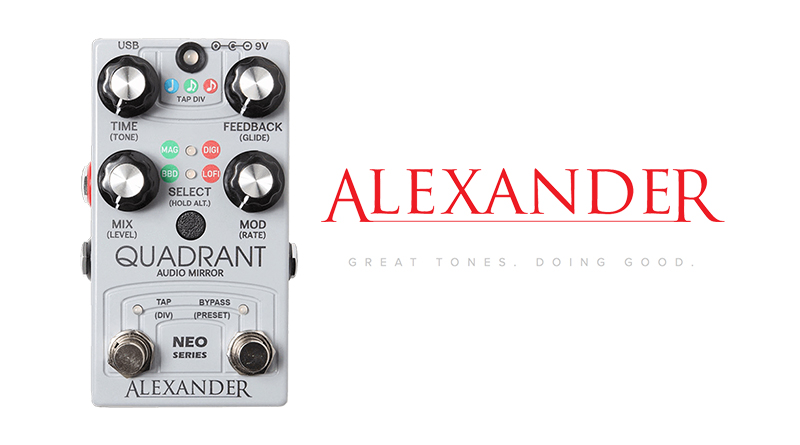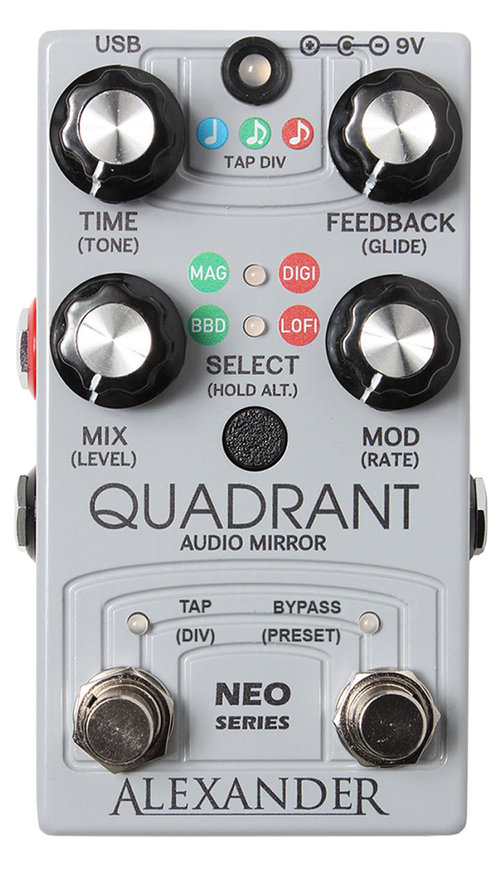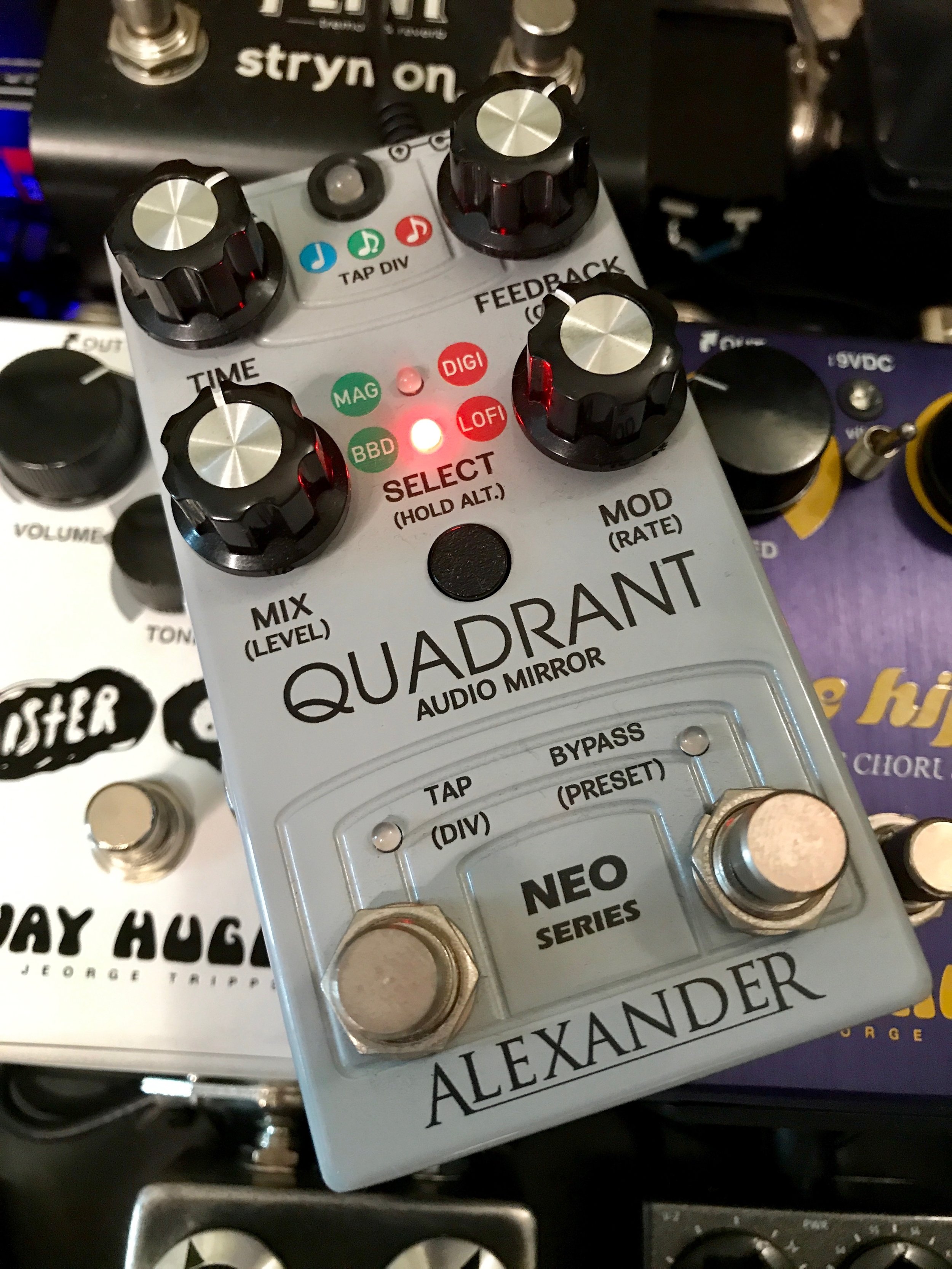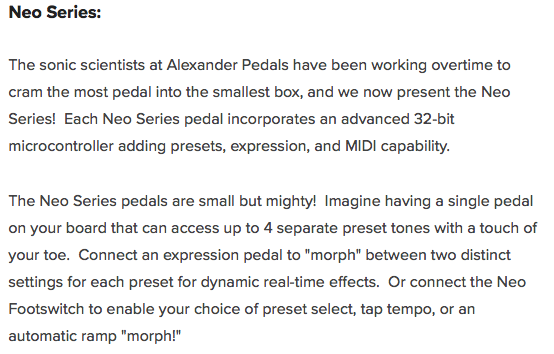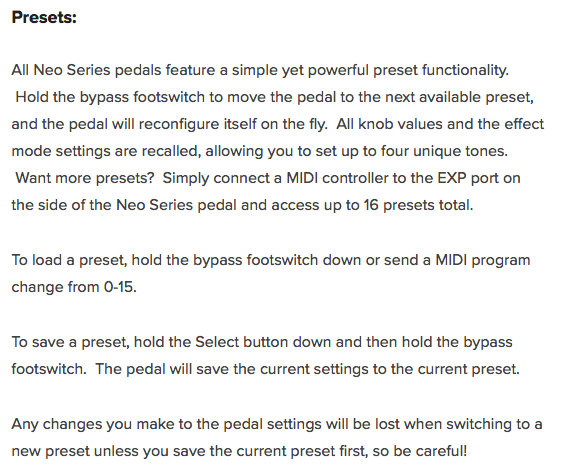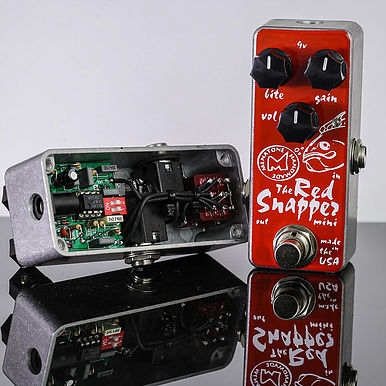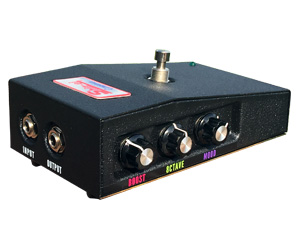Hello Gearheads!
Today I’m showcasing the Alexander Pedals Quadrant Audio Mirror, a really cool and versatile delay pedal from the new “NEO SERIES” from Alexander Pedals. The Neo Series incorporates an advanced 32-bit microcontroller adding presets, expression, and MIDI capability. Essentially, Alexander Pedals are offering state of the art technology at much more affordable prices… and most importantly, wonderful TONES!
There are 4 different styles of delay available in the Quadrant: Magnetic, Analog, Digital & Lo-Fi. Each delay setting has a very natural tone that simulates it’s origin quite well. You can access these delay types either by manually selecting them or by using the available presets that are pre-loaded in the Quadrant. They give a nice idea of what this delay pedal is capable of while also giving you the option to create your own, which I highly recommend.
I found the tones available in the Quadrant to be very good considering it’s a digital pedal replicating the tones of benchmark delays such as a Maestro EP3 Echoplex or a Electro Harmonix Deluxe Memory Man. The sounds are very present and easy to manipulate with the simple controls. While I did test and use each delay setting for my demo, I found the Analog setting to be my personal favorite. As a lover of all things Deluxe Memory Man, I found the Analog setting to be close to that beautifully inspiring vibey and moody tone that we all love from our favorite bucket brigade boxes. The modulation circuit was on point and the tone of the Analog setting was “present” in a similar way that I find some of the best sounding big box DMM’s.
In the track and demo below I focused on using the Quadrant to help create not only the tones but the music itself. It was easy and intuitive to let the music flow… at the end of the day, that alone is worth the price of admission with any piece of gear. I ask myself that question often in regards to new gear… “Does this inspire me? Does this let the creation of music flow?” It’s honestly that simple! I had a blast making this demo and urge anyone looking for a great utility delay pedal with MANY features, and most importantly a fantastic Deluxe Memory Man reproduction, to take a look at the Alexander Pedals Quadrant.
Until next time Gearheads!
M.
